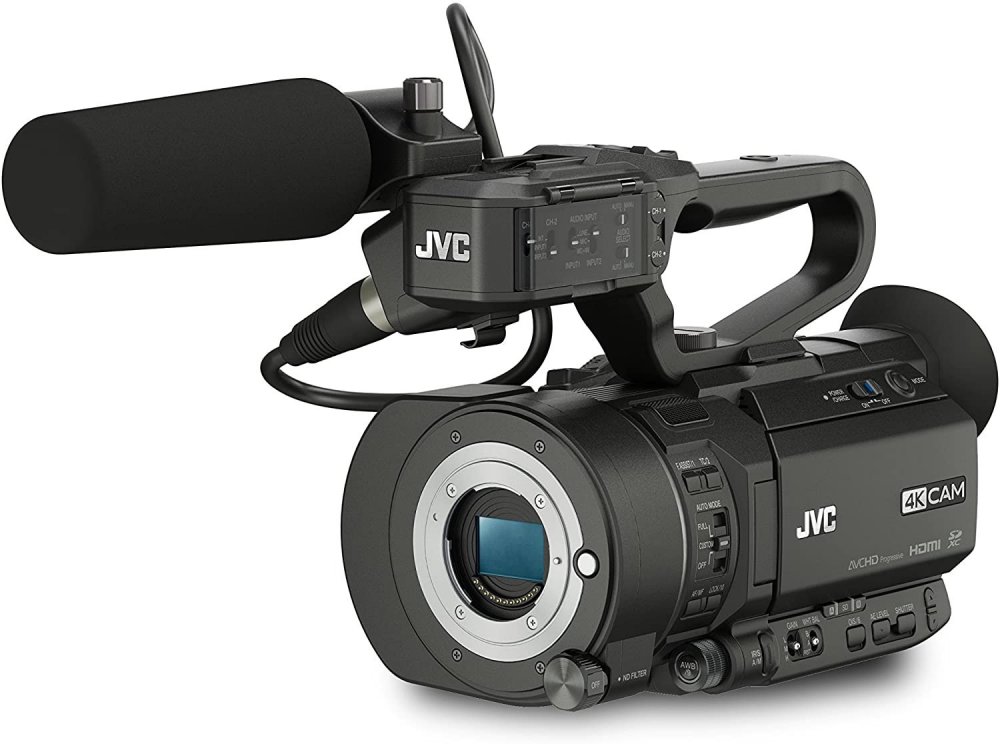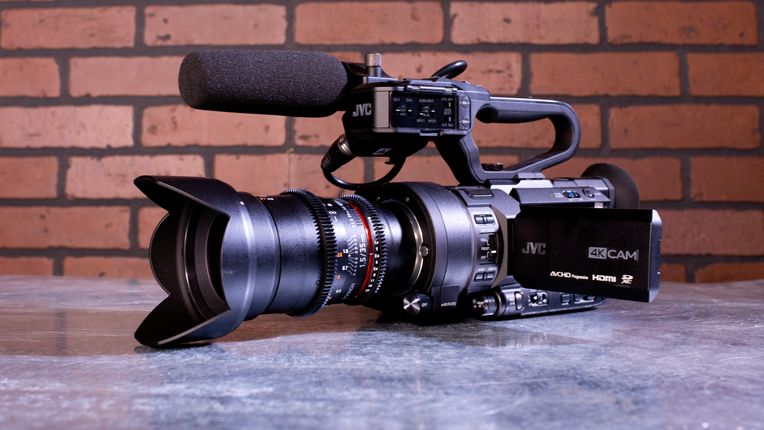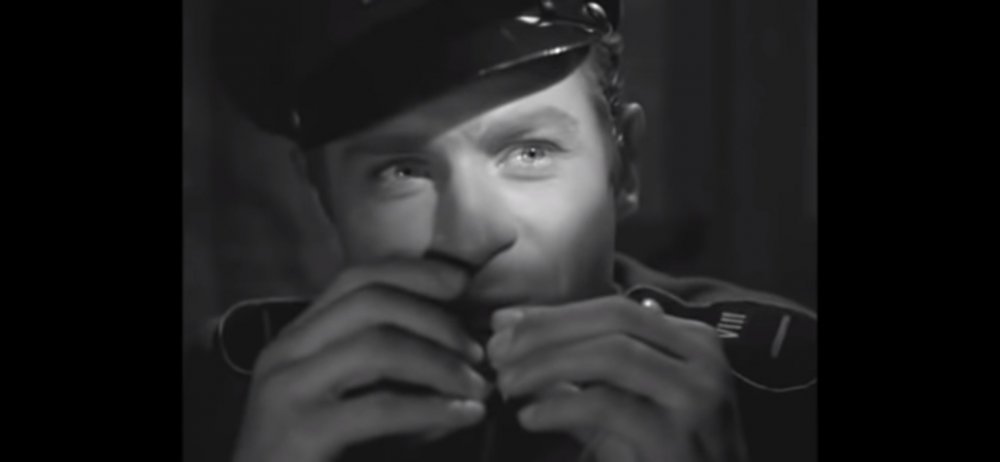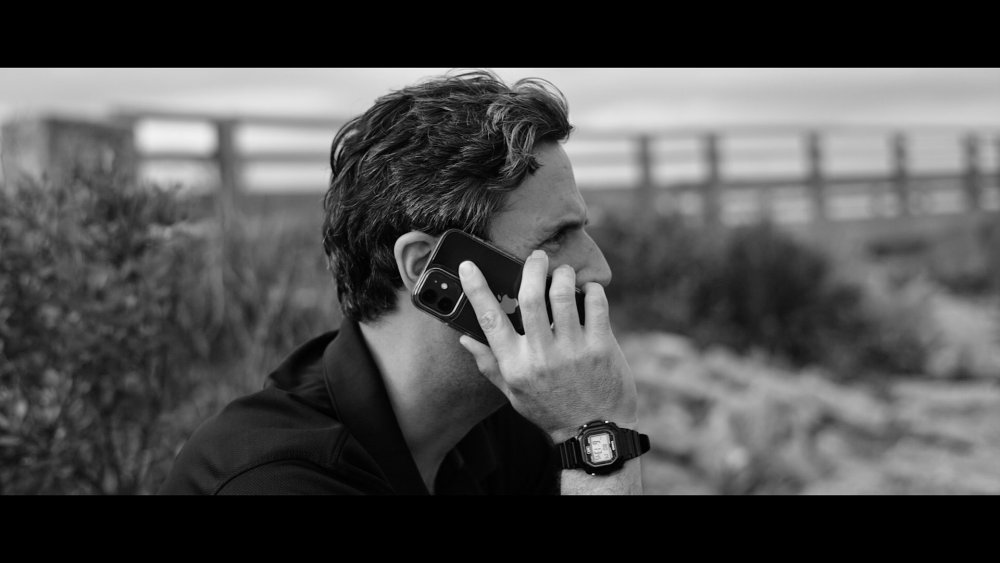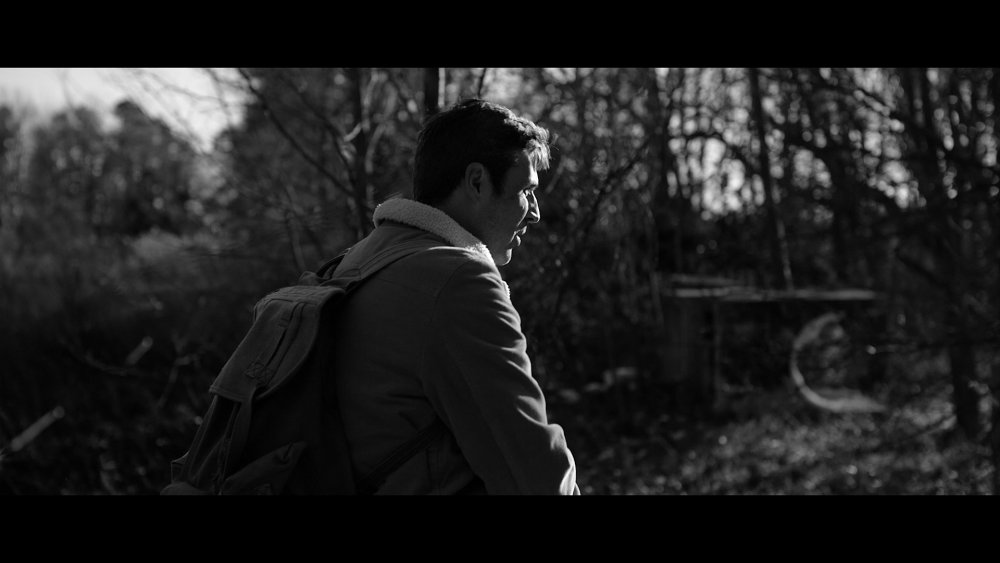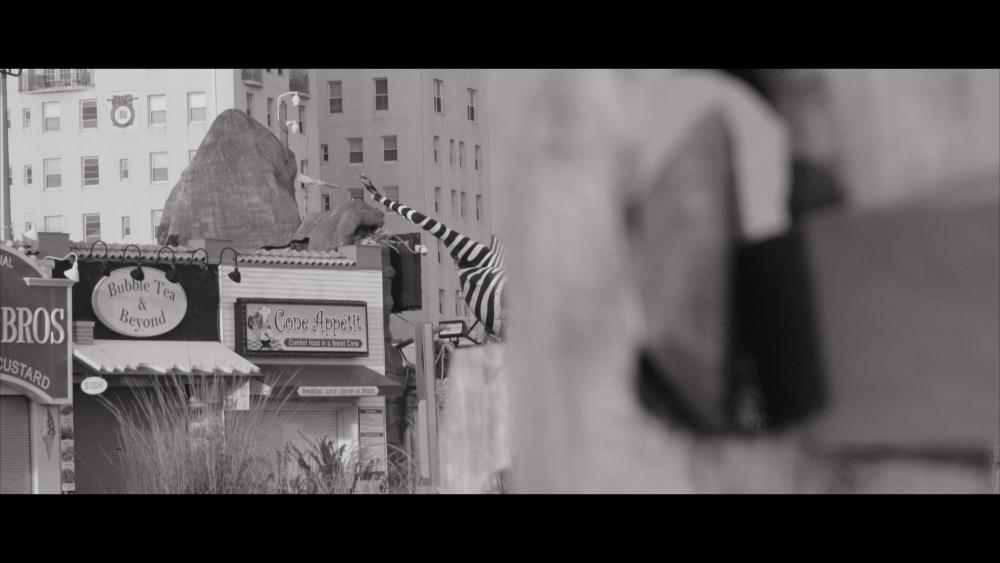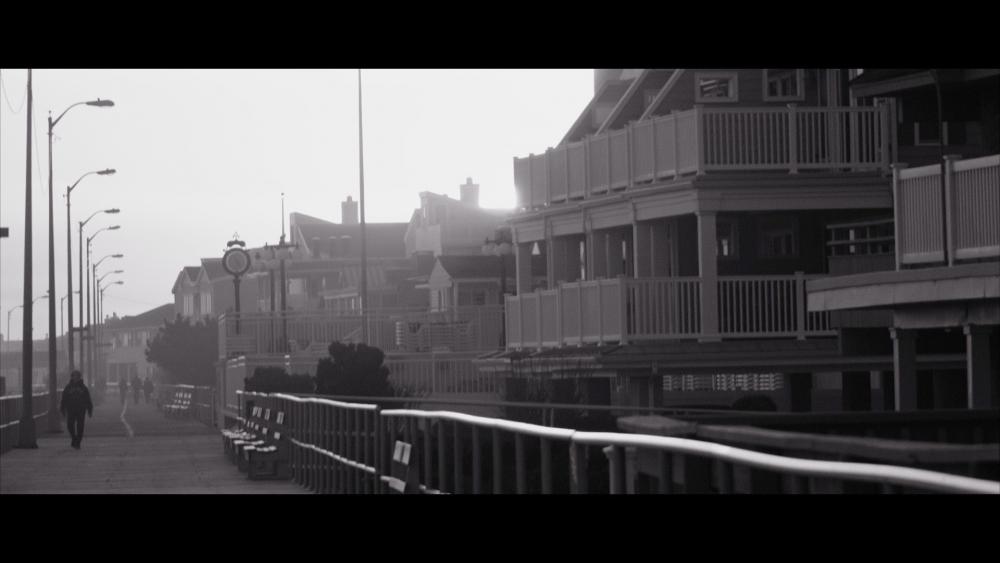Leaderboard
Popular Content
Showing content with the highest reputation on 02/19/2022 in all areas
-

Olympus OM-1
Juank and 2 others reacted to Andrew - EOSHD for a topic
It doesn't take up a huge amount of room either, the diameter of the front of the camera is only a bit bigger than your average EF lens. I wish the camera companies would recognise the importance of this mechanism and put it in. Canon C70 manages it. FS5 does it. It's the Japanese obsession with small widgets that stops it from going into mirrorless cameras. Just make them 10% bigger and be done with it.3 points -
Does anyone shoot in B&W?
TrueIndigo and 2 others reacted to PannySVHS for a topic
Black and White all right. I read parts of this beautiful thread again. I never got to do a BW vid with my G6 as wanted to for this thread. So three years later comes come Black and White with my GX85, first and last shot are from the S1. Let´s show this forum some more BW love.:)3 points -
Olympus OM-1
webrunner5 and 2 others reacted to bjohn for a topic
It was Jane Bown's camera too: https://www.anatomyfilms.com/jane-bown-65-years-with-olympus/ I've been a Jane Bown fan forever, and it's worth reading the article to learn about her minimalist approach: she took some of the most memorable portraits of the 20th century, all with natural light (she never carried a flash), never used a light meter, and brought her two cameras (one with a Zuiko 50mm and the other with a Zuiko 85mm) to her shoots in a shopping bag.3 points -
Well, my friends, no Eos M as @webrunner5 assumed but GX85 with one shot of S1 in the mix. For the challenge Eos M might be the camera of choice though.:) Still waiting for my Cmount adapter to arrive. The lightest camera setup was with the GX85 and a Canon nFD 28mm 2.8 with a focal reducer, heaviest was the S1 with a Vivtar 90mm F2.5 the famous Bokina lens. I shot this last weekend as a leftover from shooting photos and did an edit and grade today. Lighting with two aperture spotlights, the 300d and an Amaran, plus two extra Fresnel Bowens mount addons, with two 150w dedos in the mix. So I hope you enjoy this as a little appetizer. cheers 🙂3 points
-
Color detail issues in Fujifilm video files
deezid and one other reacted to Attila Bakos for a topic
I found something strange when I was looking at the chromaticity channels of Fujifilm video files and did some search online, and to my surprise noone is talking about this, so I decided to make a video about it. If you're a Fuji user, you might be interested.2 points -
This is a super simple example I'm working at the moment I want to understand how much real world and virtual world can match without any effort like in this case...sorry for low resolution and bad mask but it's a very quick work Unreal camera it's set to 21mm and my camera it's 12mm on apsc (18equivalent ), it's preatty similar but not perfect... Someone kwon how to stabilize to a fix point the footsool in fusion and after that track the unreal world and assign the coordinate to the footsool?2 points
-
2 points
-
Thank you very much! @kye This edit was fun to do. Lighting was a lot of fun as well, good old gels, blackflags, DIY reflector, thin styro. The model is an aspiring director, producer and writer. For this session I directed her though.:) I´m really looking forward to do some B and W work with the EOS M. Hopefully my Cmount adapter arrives soon. I think the GX85 is a pretty good BW camera though. BW is a lot of fun, even as an afterthought like this one. When I read through this thread again I saw and really liked your BW Slog look with the RX10@mercer. It has a beautiful analogue quality.2 points
-
What a quirky and cool edit. Those people who make model profile videos have a lot to learn in terms of composition and posing! I love the variety of aspect ratios and cropping too 🙂2 points
-
If you've built a FF glass collection then that's definitely a bridge to a mirrorless S35 or FF, so in a way you were always keeping your options open. In terms of low-light I'll be very interested in the GH6's low light as that's one of the aspects of the GH5 that I really push. For example, here's a shot I took with the Voigtlander 17.5mm F0.95 lens wide open - the scene is solely lit by the lights on the river bank: I'd recommend you wait for the sample footage and tests as the specifics of how they have implemented the sensor tech will really matter. The Alexa has definitely become the gold standard within some circles. Those circles are basically people who appreciate great colour. I actually don't want ARRI to have the best colour - I'd prefer if the GH6 ends up with the worlds best colour, having the best colour come from a camera I can't afford, couldn't carry, and couldn't realistically use would be a completely stupid wish. I just find it odd that people can say "Sony might include the Venice colour science in their next A7S camera" and it's fine, but saying "I wish someone would make colour science approaching ARRI" somehow is crazy talk, as if the Alexa is a magical unicorn instead of a sensor and a processor in a box... just like every other digital camera ever. I agree. People talk about high resolutions like a "just in case / when you need it it's there" kind of thing. I see that "ready for anything" aspect as the design brief of the GH line. Do people need GH5-level IBIS on every shot? No. Most of the time a lesser-IBIS would suffice, but are there times when you need it? Absolutely. I routinely push the GH5 IBIS past its limits on trips - maybe because I'm cold or low-blood sugar or I'm filming from a helicopter with the door open at 200kph or whatever. Do people need 10-bit on every shot? No. 8-bit cameras make gorgeous footage in when exposed properly and under modest-DR situations, but are there times when you need the flexibility in post? Absolutely. I shot with the XC10 in 8-bit C-Log on a 5-week trip to Italy and have really struggled to clean up the footage because it doesn't have the latitude the GH5 has. Same logic for high-bitrates. Every now and then you film in a situation where there's lots of chaotic movement like in rain or snow or with trees moving in the wind or whatever. Also, sometimes you want to crop in post a bit and not reveal compression nasties. +1 about not wanting an external recorder. People who don't care about camera size seem incapable of understanding that everyone isn't like them, it's rather odd. Its like saying you prefer chocolate ice cream and them saying "no you don't". Thanks for your thoughts on the ALEV vs the GH6 tech. Obviously the proof is in the pudding with the images, which I am really looking forward to, but once it arrives I must admit I'd be very interested in learning more about how it works 🙂 If all you care about is specs then you can make a complete comparison from the spec sheet. Some people will be comparing specs until we see the images, but sadly, other people here only care about specs, and when talking about cameras seem uninterested or incapable of understanding the various other considerations that go into making an engaging end product. Agreed - Prores is a big deal. One thing that people probably aren't aware of is how good a codec Prores really is. For reference, a very large proportion of the movies that people saw in the cinema between the mid 1990's and the mid 2010's probably went through Prores HQ, and a good chunk of those would have been Prores HQ in 1080p. It was the bread-and-butter codec for Hollywood and often still is. People don't seem to understand that.2 points
-
Olympus OM-1
bjohn and one other reacted to Video Hummus for a topic
Great article. Thank you for sharing. I really admire her no fuss process. Very refreshing and inspiring in todays tech obsessed gear shit show.2 points -
For years, people complained that they couldn't get internal raw video on their cameras and now Panasonic is releasing a camera with internal ProRes (the next best thing to raw) and people aren't impressed? ProRes is a professional codec. With that said, is $2500 too expensive for a GH camera... YUP! Can you imagine what the S2H will cost? $5000? Way too much for that camera too... even with ProRes. I'm curious why more of the pros, on this site, aren't buying a Komodo or C300 Mark III?2 points
-

Olympus OM-1
kye and one other reacted to Amazeballs for a topic
Sadly I must agree that MFT is dying. It would probably still exist in some sort of form for much longer beeing an open system I would imagine some manufactureses still produce MFT gear once in a while, but if OM and Pana fail to make any siginificant money out of those cameras they WILL shut down their MFT camera divisions. This is just a reality.2 points -

Olympus OM-1
Emanuel and one other reacted to Marcio Kabke Pinheiro for a topic
Fun fact - last year I come across an OM-1 (the film one) for auction with a 50mm f/1.8, gave a US$ 80,00 bid, and won. Got the camera, was in VERY good condition, and the lens was pristine. My E-M10 MK III was sold this week, hence this is the replacement. 🙂2 points -
2 points
-
2 points
-
As anybody who reads my comments already know, I bought a 5D3 last Spring and instantly fell in love with the images I was getting. After almost two years of searching for the right camera for the stuff I was looking to shoot, I found it in the 5D3. But... I am the first person to admit that the post process of ML Raw can be a little tedious and requires a massive amount of storage. Since I am a hobbyist with narrative dreams, I’ve been searching for a second camera to shoot fun little vignettes in between shooting days with my 5D3. Shooting is a form of meditation for me and instantly calms me. After a couple of cameras, I ended buying an RX10ii on the cheap. Now I had the camera last year but struggled with getting good color from it. This time around, I’ve decided to mostly shoot in sLog2 and Cine2 with monochrome and I am pleasantly surprised by how good the images turned out on my first outing with it. I’ve always loved B&W photos and movies, but I’ve never really shot much with it, so I look forward to learning and experimenting more with it. Now, I have been posting around here for a few years and color science, correction and grading are all popular discussions but there is rarely mention of B&W. Does anyone shoot in B&W anymore? Does anyone have any video or screengrabs that were captured in B&W or turned to B&W in post that they’d like to share? Or even strong opinions for or against it? I’ll start off with a few screengrabs. The first two were shot in sLog2... And this one was shot in Cine2...1 point
-

Fun Simple Story With Fun Simple Cameras
leslie reacted to fuzzynormal for a topic
We're still heavily tweaking the mix and grade, edit... you know, stuff, but here's a close to finish draft for any of you chuckleheads that want a sneakpeek of M43 doing B&W stuff. Everything was shot at f2.8 on three lenses. Two primes, 24mm and 50mm, from the old Pentax Auto110 series, and the Oly 12-40 Pro. I had fun with it. We didn't do much fancy shooting 'cuz it was all one set and we wanted to emulate a 30's movie, but that was part of the joy of it all. Oh, GH5 and a EM10iii. 23.96 fps @25ss. ISO 800, mostly. What else? FilmConvertPro using their Ilford400 setting. Also (god help me never again) RedGiant's misfire plugin and universe transitions. So, look, small indy films involve a ridiculous amount of compromises along the way just to get made. It's a small miracle it happened, warts and all. Believe me, I pretty much only see the warts at this point. Hooray! Filmmaking! (I'll only leave this up for a short time...)1 point -

Fun Simple Story With Fun Simple Cameras
Danilo Del Tufo reacted to fuzzynormal for a topic
Aww, thanks for giving out such a nice compliment. Appreciate it!1 point -
Panasonic GH6
Juank reacted to Caleb Genheimer for a topic
I agree that the Alexa sensor is definitely “gold standard,” but also that expecting that kind of performance out of something like a GH6 is a bit unrealistic. That being said, I wish the prosumer camera manufacturers would throw in the towel at around 6K resolution, and begin focusing on dynamic range in video. That directly corresponds to the technology previously discussed: dual gain output photosites. The current limiting factor for basically all prosumer camera DR is the ADC (analog to digital converter) bit depth of 12 bits, which limits performance to 12 stops of DR. Fancy processing can squeeze out a bit extra (like the ~12.7 stops of the S1H,) but that’s the limit. The Alexa sensor’s photosites have TWO ADC each, at different gain settings, in parallel, for simultaneous capture (at the same moment.) The signals from these offset sensitivity ADCs are then combined by the image processor to cover a resulting higher DR. This is entirely possible in a prosumer camera at reasonable bitrates via LOG scale encoding. The real bottleneck is the ADC tech, which is linear in nature. For the vast majority of applications/users, 12-and-change stops is plenty enough to get a satisfactory image with room for flexibility, but those wanting to accurately simulate DR-dependent effects like Bloom, Halation, and flare, it is important to have as much differentiation in the highlights as is possible. I’ve found the S1H to have… enough DR for pretty reasonable halation approximation, providing I expose for the highlights. I’d take two more stops though if another prosumer camera offered it. It sounds like the GH6 is using an entirely different approach to increase DR: sequential offset exposure. That’s not bad, necessarily, but it’s far more computational/AI in nature, and could definitely have motion artifacts. I feel we’re finally at the juncture where the internal codecs and bitrates on prosumer cameras have caught up to the capabilities of the sensors, and it’s time for attention to swing back to the underlying sensor tech for significant improvement. I’m also a bit sad to see the continuing use of DFD AF. Prediction: “3X faster processing” will just mean “3X faster micro jitter.” I’m ready for Tilta or DJI to make a stand-alone TOF/LiDar wireless follow focus AF/focus aid device. The tech is there in the Ronin 4D, and I’d willingly pay several thousand dollars to remove AF from all my future camera body purchase decisions.1 point -

Panasonic GH6
webrunner5 reacted to Marcio Kabke Pinheiro for a topic
Each one is really each one, hehehehe - I still have the LX100 (will never sell it), but I think that its colors have a very greenish cast (like the GH4, who is in the same generation). My GX85s and GX9 (specially the GX9) have m uch better colors for my tastes.1 point -
I had a brief play with an OM-1 today (my local camera store had an 'Olympus Day' with an OM Systems rep in attendance). Nice camera - feels very much like an E-M1 mk2/mk3 in the hand - as expected. The new EVF is lovely - larger/sharper/smoother and nicer looking/less obtrusive graphics. The new menu system looks good too (and is a long overdue redesign, I think). It had the new 12-40mm 2.8 mk ii lens on it, so I tried it recording 4k60p with 'medium area' C-AF, shutter priority and (I think/assume) auto-ISO selected. I panned it back and forth between close focus inside the store to infinity outside in sunshine - nice smooth refocusing and exposure changes every time and the IBIS seemed very good - basically as expected. I was a bit disappointed that (in video mode) it only appeared to offer a choice of four sizes of rectangular focus areas (centre, small, medium and full area) - I was expecting it to offer the same choice of focus areas & shapes as in stills mode (i.e. like my Pana G9 does). Asked the rep about this and he confirmed the limitation and that he'd pass my comments on to OM Systems. Note this is for the basic video C-AF - AFAIK touch-AF, tracking, subject recognition etc. can all be used for video, but I didn't try those. Overall - based on a 10 minute play with it, of course - I think OM Systems have a very nice camera in the OM-1, and (particularly if you need a weather sealed, relatively small and light hybrid camera system) it feels probably worth the price. Question is - do I really *need* to replace my G9 + E-M1 mk ii combo with an OM-1, or am I just suffering from GAS? 😀1 point
-
Ask Fuji's X100. He/she/they will respond, "well I have one and I may be APSC, but I'm pretty dinky" 😬1 point
-
Yup. We can chase that next bit of kit if what we have is preventing us in some way on a technical level, but the rest is 'the art'.1 point
-
JVC LS300 in an MFT mount with a physical switchable ND behind it so no reason (patent issues aside etc) why there couldn't be an electronic one.1 point
-
Olympus OM-1
kye reacted to Video Hummus for a topic
Canon has a physical ND in the 20mm RF flange of C70. I think its pretty clear they can put NDs (especially an eND) into typical mirrorless flange distances when the shutter is removed. Sony will do it first.1 point -
They made a RAW shooting one five years ago so they do have form.1 point
-
I'm keen to read more about this - can you link the source? I'm not explaining the entire image pipeline in every post that I make, but even if I did no-one understands the details anyway so it wouldn't help. Perhaps instead of just saying I don't understand things, speak to something tangible that I can talk to. In terms of having used RAW footage? Sure. Probably more than a dozen. I own three cameras that shoot RAW - one Canon and two BM. What's your point? I'm trying to get the best colour possible. For that I have pulled apart the colour science from many brands, trying to understand what they are doing. I talk about ARRI mostly because they give the nicest colour by just applying their official LUT. RED is right up there too, along with BM 2012. BM 2018+ and Canon (RAW) are nice too, but aren't really at the highest level. I own the Emotive Colour matrix and don't talk about it much here, partly because I've pulled it apart and don't want to give away too much, and partly because the it's so fragile to use - if the stars didn't align then you're not getting good results. It doesn't like exposure changes much and doesn't deal with mixed colour temperatures basically at all, which is present in most situations I film in. I have also bought film simulations from Juan Melara, downloaded DCTL plugins from professional colourists, LUTs from post production houses, and many other things. Did you see the difference in image between the Alexa and the LF from that guy who did the comparison by splitting the light with a piece of glass to duplicate the cameras position between the two? The other manufacturers may have been closing the gap but that was ARRI leaping ahead by a mile. You don't seem to really acknowledge the differences, but I read lots of comments from people who are amazed at how much of an improvement they were able to make to what was already a world-leading performer. I suspect colour matters more to me than to you. Sadly, in the blind tests I always pick the most expensive cameras, even if I watch the comparison in 480p on YT. You missed my point. If I was a manufacturer including h264 in a camera, I know it's going to be targeted at consumers and videographers, so I will go a bit heavier on the processing because that's what this audience wants. If I then decide to include Prores, I know it's for a different target market who have different expectations about the image, and so I'm likely to apply far less processing when the camera is set to record Prores rather than h264. The anamorphic mode in the GH5 applies less processing than the 16:9 modes, so Panasonic clearly understand that it's for a different target audience. Panasonic would be insane to include consumer amounts of processing and NR when the camera is set to record Prores. Cool. Personally I record in a lower resolution than the sensor and don't want the camera to crop. For this, Prores is the winning option. Saying that would be plain wrong. Good thing I didn't say it! Thanks for pointing that out? I've done tests on a number of RAW cameras comparing the various bit-depths and also comparing the latitude of RAW vs Prores and mostly I'm ok with 10-bit Prores recording a log profile. I'd prefer a 12-bit Prores if it's available, but I'll happily take Prores HQ. Colour science quality (and image quality in general) has two factors for me, the first is how good things look when under the optimal conditions. This is how (you'd hope) most professionals working on controlled sets are working. The other main factor of colour science is how robust the image is when conditions are far from perfect. This is probably something you're not very experienced with, but it's the vast majority of clips that I shoot. I've mounted my BMMCC and GH5 together and put them through a number of sub-optimal situations and then pulled the footage into Resolve and graded them side-by-side and the results are eye-opening. The BM footage just does what you tell it to do, whereas the GH5 footage suffers almost immediately. The sweet spot of the GH5 is has pretty good colour, not great but good, but that very quickly disappears when pushing and pulling the footage, even just adjusting the WB reveals that the small amount of colour magic it does have is pretty fragile. I've graded files from the S1 and the colour in the sweet spot was nicer, the DR was higher, but the magic was still quite fragile and the footage felt like the GH5. I'm hoping that with colour science improvements and Prores that the files will have more colour science magic and that the magic will be more robust when graded.1 point
-

Olympus OM-1
Emanuel reacted to John Matthews for a topic
I'm glad you're seeing the potential of M43 as an open standard... DJI would NEVER do that for ANY FF maker with a proprietary mount.1 point -
Arri's overall image is an ensemble of things: To create such outstanding images, all components of the imaging chain are custom designed by our engineers and carefully tuned for optimal performance, starting with the optical low pass filter, the CMOS sensor, the imaging electronics, and the image processing software. The image processing step comes after the RAW image data: Nothing is "baked" into an ARRIRAW image: Image processing steps like de-Bayer, white balance, sensitivity, up-sampling or down-sampling, which are irreversibly applied in-camera for compressed recording, HD-SDI outputs, and the viewfinder image, are not applied to ARRIRAW. All these parameters can be applied to the image in post. ARRIRAW converter allows you to apply these image processing parameters to output ProRes 422/444 LogC files. You can also do it in-camera directly when shooting ProRes. Their actual color science isn't secret: We openly publish our color science as standard SMPTE documents (Recommended Disclosure Document (RDD) 30:2014 and RDD 31:2014). Ok but have you actually worked using Alexa/RED/BM/Canon RAW footage on an actual project? Because I have. I ask this, because out of all your researching you still seem to not grasp many basic aspects concerning RAW, Log & ProRes. It sounds to me like you are mostly interested in matching your (GH5) camera footage to.. an Alexa. That's a fair intent and I'm sure you learn a great deal about CS & colour grading in the process but if that is your ultimate goal then perhaps buying Emotive Color matrix power grade will help you more? Well, first off not every camera uses Sony sensors. Canon produce their own. And second, each brand and subsequent camera model has its own image processing, codec choice, log curve, colour matrix, optical lowpass filter (or lack of i.e Fuji XTrans) etc. It took a while for DSLR/MILC hybrids to disengage from the photo side and fully bring all the cine elements to their video modes but we're getting there now with RAW/10-bit Log/ProRes etc. DR/RS keep getting better. I do think the gap is closing, even if ARRI/RED are still ahead. ProRes is just a codec. A damn good one (especially ProRes 4444 XQ) but it's a lossy baked-in codec as are h264/h265. Now how a camera decides to encode these codecs from RAW is where the whole image processing happens. Adding sharpness to match the look of RAW on a compressed codec is a well known technique. Has nothing to do with ProRes itself. Personally, I like to convert RAW myself and have full control on things like sharpness or NR. ARRIRAW has a bunch of conversion settings, including precise sharpness, detail & NR but also various de-bayering algorithms that all shape the look. Again ProRes is just a codec. It's a pro standard and insures certain bitrates and bit-depths. Like any compressed codec it is useful for file-size and fast turnaround. Not every project allows you the luxury of storing & converting RAW footage. That said, ProRes remains lossy and image processed vs. RAW. Saying it's indistinguishable from RAW is plain wrong. RAW can be pushed in almost infinite ways compared to ProRes. Especially if you bake in a Rec709 profile instead of Log to your ProRes output.1 point
-
Panasonic GH6
mercer reacted to billdoubleu for a topic
Sure, people were complaining about not having professional editing codecs available internally in cameras like the GH5, but, those complaints began at least five years ago when Prores was already 10 years old. Prores was an option in every blackmagic camera alongside CinemaDNG starting in 2012, so, there's no logical argument that those codecs couldn't have been included in the GH5. The GH3 should've been the last GH camera sans Prores. Here we are in 2022 and there is a growing list of RAW/ RAW(ish) codecs that didn't exist five years ago. ProresRAW, BlackmagicRAW, TICO-RAW are innovations sprung from the limitations imposed by RED's patents. These are all available internally in one or more cameras. Along with uncompressed RAW in the Sigma fp. So, while Prores is a welcome addition, no one should be impressed by it. Panasonic should either have developed a RAW technology by now or be licencing one.1 point -

Panasonic GH6
Mark Romero 2 reacted to Django for a topic
Ok rather than blame Sony or high-resolution etc.. Let's try and actually tackle the actual IQ/CS situation to understand the bottlenecks and what's at stake shall we? There is much more to CS than sensor manufacturing. Sony make sensors for Sony/Nikon/Fuji/Panasonic yet they all fine tune to their respective CS through image processing. And CS evolves.. for better or for worst depending on personal preference. Some people prefer pre-GH5 color gamuts. Same with Canon, some miss the 5D3/C100/1DC CS.. fortunately Canon bodies allow to set the log color matrix to "Cinema EOS original" or the more ARRI inspired CS "neutral". You get to decide. Every camera manufacturer has its own golden standard. For Sony its Venice and A7S3/FX3/FX6/FX9 allow proper Venice S-gamut3.cine in log but also S-cinetone profile for a baked-in Venice look. For Panasonic, their gold standard is obviously Varicam. But what some may not realise is that GH5's Vlog-L doesn't operate in V-Gamut but in Rec709. So it's kind of a fake Varicam CS. Also seems to dead-end ACES workflow with no appropriate IDT support from Panny AFAIK. You have to step up to S1H for proper V-Log/V-Gamut. ARRI -the Hollywood gold standard- Log C uses Alexa Wide Gamut (AWG) with either 10-bit ProRes 422 or 12-bit ProRes 4444 XQ. AWG works in a much larger colour space than Rec709. The encoding was done with a complete and deep ACES workflow in mind. This whole relationship is what makes for a class-leading grading platform. Other important IQ related aspects are in-camera sharpening and NR. Both seemed to plague GH5. Will be interesting to see if GH6 tackles some of these issues.. we still know nothing of the actual ProRes flavours or if Log is still Vlog-L or proper Vlog/VGamut...1 point -

Does anyone shoot in B&W?
mercer reacted to Matt Kieley for a topic
I coincidentally just bought one today for dirt cheap. I wanted one about 5 years ago but it was still a little pricey for me at that time. I'm excited to playa round with it, especially in Monochrome.1 point -
Thanks @PannySVHS I really enjoyed shooting B&W with that camera. Changing the color to monochrome in the sLog settings seemed to help give the highlights a filmic look due to the higher dynamic range. And as I mentioned earlier, it negated the dreadful sky banding. Before I changed the setting to monochrome in camera, I tested the theory on color footage and as I brought the saturation down, I could see the banding disappear. I like the MonochromeL profile on the GX85 as well. I've been considering buying a camera that I only use for B&W. I suppose the Fuji X-S10 would be kinda perfect for that. Acros Film simulation, or fLog, Super 35, IBIS, high bitrate 2K and 4K. There was something very cool about the RX10ii, though. It felt like some kind of cine-camcorder.1 point
-
I'm not the biggest fan of the GH5 colour science either. Which makes me happy that Panasonic seem to be chasing a better image with the GH6 instead of just chasing endless resolution at the expense of everything else. The colour from the more recent Panasonic cameras has all been incremental improvements over the GH5, so I'm optimistic about what they'll do with a new sensor. The other aspect to making images pop is lenses, which there are more and more available all the time now with third-party manufacturers like 7artisans, TTartisans, Meike, Mikaton, etc making interesting offerings. To me they're interesting because they are a perfect-combination of features - they have simpler optical designs and simpler coatings that are reminiscent of vintage lenses that are now climbing radically in price, but due to cheap Chinese manufacturing are both low-cost and also relatively high-quality. Unlike modern high-resolution high-precision zero-distortion lenses which have a very dull and lifeless rendering, these third-party primes tend to exhibit the aberrations that make lenses like the "Zeiss 28mm f2 'Hollywood'" lens famous, plus with MFT or APS-C lenses you're seeing more of the edges of the image circle than you do from FF lenses and so you're getting more of those character-providing flaws. I'll be talking more about this in coming weeks, but there's a lot to talk about, let's just say that.1 point
-
Panasonic GH6
webrunner5 reacted to Video Hummus for a topic
Well the DGO method is using hardware and the other method is doing two different exposures at different shutter speeds and then blending them. I think ZCAM tried to do this and this is also what phones are doing with fast shutter speeds and fast readouts (looks bad in my opinion).1 point -
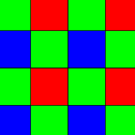
Which cameras have the most pleasing grain structure?
webrunner5 reacted to M_Williams for a topic
Yes the Komodo does have built-in highlight recovery that uses other color channels to reconstruct clipped data, exactly like Da Vinci.1 point -
I don't understand... Granted that we will then need to see the files generated, I don't understand how you can compare the two cameras on video specs. It seems to me that the OM-1 has almost the same specs as the current GH5 except for 240 fps in Full HD and external ProRes. Just fto name a few: OM-1 H.265 Long GOP/MOV 4:2:0 10-Bit DCI 4K (4096 x 2160) at 23.98p/25p/29.97p/50p/59.94p [77 to 152 Mb/s] H.264 Long GOP/MOV 4:2:0 8-Bit DCI 4K (4096 x 2160) at 23.98p/25p/29.97p/50p/59.94p [102 to 202 Mb/s] GH6 K120p 4:2:0 10bit 300Mbps 4K 60p 4:2:2 10bit 800Mbps/600Mbps 5.7K 60p 4:2:0 10bit 300Mbps C4K 120p 4:2:0 10bit 300Mbps C4K 60p 4:2:2 10bit 800Mbps/600Mbps1 point
-

Panasonic GH6
kye reacted to Ian Edward Weir for a topic
I have solely used GH cameras. GH2, GH3, GH4 and GH5. When I look at the GH6 I say to myself I have the GH5 and it still kicks ass. I only use manual lens and could care less about auto focus. Being that the GH5 holds down MFT for me and some thing like the Z-Cam M4 looks like next level MFT. I'm really thinking of jumping into a S5 or the next version of the SHII. Anyone else feel the same way? The size of the GH6 looks around the same size as full frame cameras. The idea of seeing my vast collection of adapted lens in their native FOV and having the low light capabilities are more appealing than GH6. Anyone else feel this way?1 point -
I have a phase one p45+. This back is CCD but very old, it has a Kodak sensor and it's not that great in terms of DR, BUT compared to CMOS, I enjoy the shadows even if they are noisy. With modern CMOS there is a lot to recover from shadows, but it looks horrible, wrong, desaturated colors, with the p45+ it goes noisy but the color still look right. I guess if you pixel peep or do some measurments the DR will be better on the CMOS, but watched from a distance, the image as a whole looks better on the CCD to me. Not to speak about colors, but I believe this is because of the bayer filter strength. I think the reason to go for cmos was because it's cheaper and consumes less energy.1 point
-

DJI Ronin 4D - NO ProRes RAW???
The Dancing Babamef reacted to andrgl for a topic
Yeah, this is super frustrating. BRAW is great but Blackmagic doesn't (yet) offer the sensor-in-a-box I need. And looks like we won't be ever be getting internal ProRes RAW due to RED. I bought a Ninja V+ recently. It's great. But it is something you need to rig, power and wire; one more potential point of failure that can **** a shoot.1 point -

Color detail issues in Fujifilm video files
Andrew - EOSHD reacted to tupp for a topic
Very nice presentation! The "washed-out" colors from the Fuji files perfectly demonstrate a fundamental imaging principle: Color depth is a direct function of resolution and bit depth. Here is the color depth formula for RGB digital systems: COLOR DEPTH = (RESOLUTION x BIT DEPTH)³ The Fuji color smoothing (or any other chroma sub-sampling method) reduces the resolution of the chroma channels, and, thus, reduces the color depth -- even though the bit depth remains unchanged! The video mentions that Fuji files yield a UHD luma channel and HD chroma channels. However, it certainly appears that the Fuji chroma smoothing reduces the effective chroma resolution to significantly less than HD, which makes your comparisons a dramatic example of how resolution affects color depth. By the way, the reason that the Fuji jpeg stills have better color depth (even with the Fuji chroma smoothing) is likely due to the fact that they have a higher resolution. Thanks for these comparisons!1 point -
Yes, if you are using electronic EF lenses then there are no additional requirements. If you are using manual focus lenses then of course you need to add Nucleus-N or M motors. As above, the current production have all sold out and there will be another run when the component cost/supply chain issues have settled down so there is no ETA at the moment. If you have contacted or do contact cdatek regarding future availability then you will automatically receive an email when they are available.1 point
-
@mercer Inspiring work, Glenn, hats off! Loved the choice of the black shirt BTW : ) - EAG1 point
-
Hey Mercer, finally a post where I can say, "SHOOT LOG ALL THE TIME!" The drawbacks of LOG, chroma noise, only create a nice film-grain look in BW. All that said, I believe you'll still get a better image shooting RAW. I compared the RX10II to the professional X70 I had at the time an couldn't see a difference. In short, those RX10s shoot a sweet image and have a nice selection of LOG profiles. If I was going to shoot B&W that would be of my top 10 cameras. Nice images! I keep meaning to shoot BW. Another hangup I need to fix. Post a video when you have one! @UncleBobsPhotography First, you'd need to remove the Color Filter Array (like the Leica Monochrome) to shoot true B&W--in STILLS! In the RX10, it's actually a 1080 image downsampled from 4K, so you shouldn't have much chroma problems interfering with your B&W. In other words, not sure a b&w sensor would give you much benefit except it should be more sensitive to light (having no light-slowing micro-filter-lenses) and give you a higher effective ISO. h264 duplicates values in 420 or 422. Cracks me up that in some other threads people want 444 in 10bit. Who needs that? Give me 444 in 8bit and I'll throw a party! Anyway, h.264 stinks for everything compared to RAW but stinks less for B&W Rock on Mercer!!!!1 point


